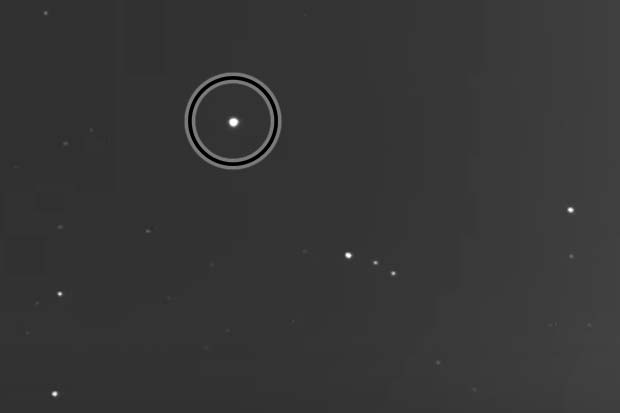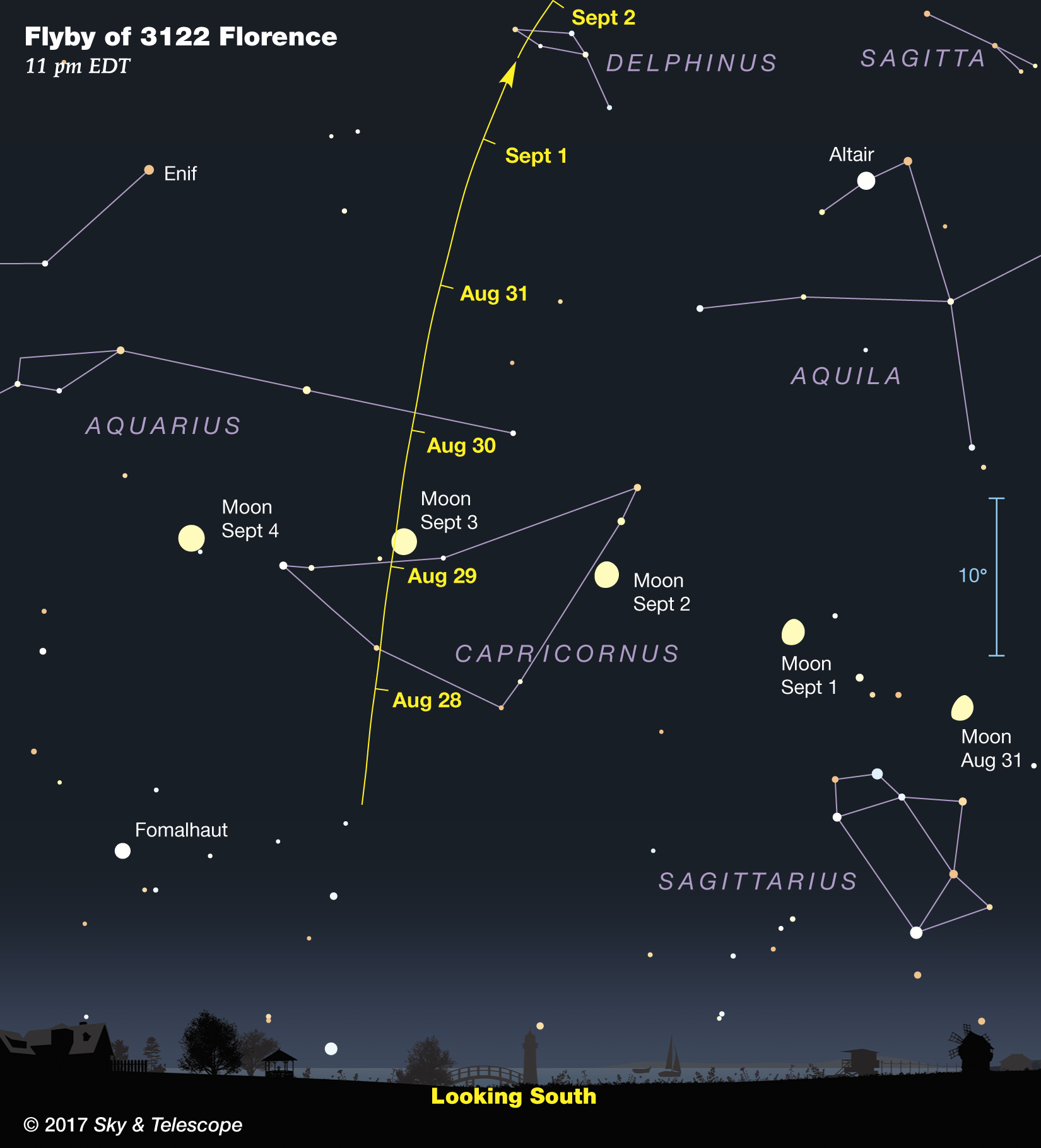Huge Asteroid 'Florence' Zooms Past Earth in Record-Breaking Flyby
A mountain-size space rock cruised past Earth this morning (Sept. 1) in a record-breaking encounter that has long had scientists drooling.
At 8:06 a.m. EDT (1206 GMT) today, the roughly 2.7-mile-wide (4.4 kilometers) asteroid 3122 Florence came within a mere 4.4 million miles (7 million km) of Earth — just 18 times the distance from our planet to the moon.
"Nothing this big has passed this close to Earth since we've been tracking," Paul Chodas, manager of the Center for Near-Earth Object Studies at NASA's Jet Propulsion Laboratory in Pasadena, California, told Space.com. "This is a once-in-40-year-event kind of thing." [Famous Asteroid Rock Flybys and Close Calls (Infographic)]

Only 10 or so asteroids as big as Florence exist in near-Earth space, Chodas said. There was never any chance of the space rock hitting us on this encounter, and astronomers have mapped out Florence's orbit well enough to know that it poses no threat to Earth for the next few centuries at least, he stressed. (But if something as big as Florence did hit us, it would be very bad: Scientists regard any impactor at least 0.6 miles, or 1 km, across as a potential civilization-ender.)
Florence was discovered by astronomer Schelte "Bobby" Bus in 1981 at Australia's Siding Spring Observatory. The space rock loops around the sun every 2.35 years on an elliptical path, getting as close to our star as 1 astronomical unit (AU) and as far away as 2.5 AU. (One AU is the average Earth-sun distance — about 93 million miles, or 150 million km.)
Astronomers have also determined that Florence is a superfast spinner, completing one rotation every 2.4 hours.
"If it were spinning any faster, it would fly apart," Chodas said. "What often happens is, asteroids that are spinning this quickly rearrange into the shape of a top, where they have kind of a bulge at the equator."
Get the Space.com Newsletter
Breaking space news, the latest updates on rocket launches, skywatching events and more!
But that's just an inference in Florence's case; the asteroid's shape isn't known for certain. Indeed, not much about Florence is. For example, astronomers don't know if the space rock has a moon. And the 2.7-mile size estimate, which is based on infrared observations by NASA's Spitzer Space Telescope and NEOWISE mission, is just that — an estimate. It could change once researchers get some better observations, Chodas said.
"There's a lot to learn about this little world," he said.

Which brings us back to today's flyby. Florence has come close enough on this encounter — eight times closer to Earth than it's ever been since its 1981 discovery, Chodas said — to be pinged by radar, and scientists are taking full advantage of the opportunity. They've been using powerful facilities such as NASA's Goldstone Solar System Radar in California and the Arecibo Observatory in Puerto Rico to get the first-ever good looks at Florence.
The radar images should reveal Florence's true size and shape. They may even achieve 10-foot (3 meters) resolution, allowing surface features such as boulders and craters to be spotted, Chodas said. Optical telescopes around the world have been trained on Florence as well, gathering other types of data that will further flesh out researchers' understanding of the asteroid, he added. [In Photos: Potentially Dangerous Asteroids]
This flyby is like a space mission to an asteroid, "but the asteroid is coming to us," Chodas said.

Astronomers aren't the only ones who can get looks at Florence right now; the asteroid should be visible through backyard telescopes for the next few days. You can read about how to see asteroid Florence in telescopes here.
Editor's Note: If you capture a great image of asteroid Florence moving across the sky and would like to share it with Space.com and our news partners, send photos and comments to spacephotos@space.com.
Follow Mike Wall on Twitter @michaeldwall and Google+. Follow us @Spacedotcom, Facebook or Google+. Originally published on Space.com.
Join our Space Forums to keep talking space on the latest missions, night sky and more! And if you have a news tip, correction or comment, let us know at: community@space.com.

Michael Wall is a Senior Space Writer with Space.com and joined the team in 2010. He primarily covers exoplanets, spaceflight and military space, but has been known to dabble in the space art beat. His book about the search for alien life, "Out There," was published on Nov. 13, 2018. Before becoming a science writer, Michael worked as a herpetologist and wildlife biologist. He has a Ph.D. in evolutionary biology from the University of Sydney, Australia, a bachelor's degree from the University of Arizona, and a graduate certificate in science writing from the University of California, Santa Cruz. To find out what his latest project is, you can follow Michael on Twitter.









